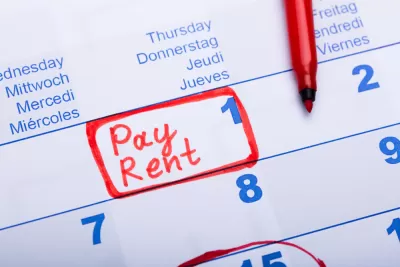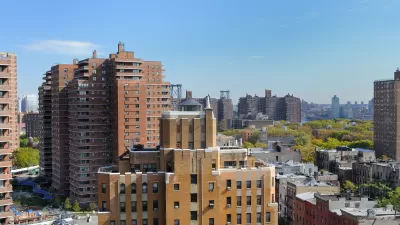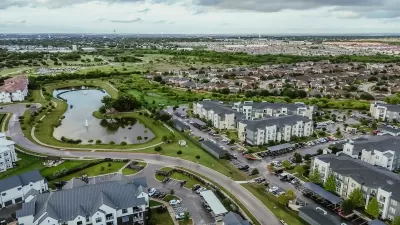Despite a small downturn in average rents at the end of last year, American renter households continue to struggle with unaffordable housing costs.

For most American households, the rent is still too damn high, report Monica Potts and Holly Fuong for FiveThirtyEight. According to the article, “Even in many cities that had previously been affordable, rents keep getting higher, stretching more families’ budgets and spreading a largely coastal problem to nearly every part of the country.”
Even as rents begin to dip, the huge increases of 2021 mean that average rents remain well above pre-pandemic levels. The average year-over-year rent increase before the pandemic was 4 percent. In 2021, some U.S. cities saw year-over-year spikes of as much as 33 percent, according to Zillow. “The effects of the COVID-19 lockdowns, intercity moves made at the beginning of the work-from-home era and record-high inflation made the long-standing problem of increasing rents all the worse.”
The authors note that data from companies like Zillow don’t capture the full spectrum of challenges faced by renters, such as unsafe conditions. “Now, with the economy poised on the edge of a recession, the programs established during the pandemic to help families afford housing are expiring.”
While some cities are implementing eviction protections and rent stabilization, Potts and Fuong call them “piecemeal solutions to a fundamental problem.” That is, “There is not enough housing for people to live in, and it’s gotten more unaffordable for a wider swath of Americans.”
FULL STORY: Rents Are Still Higher Than Before The Pandemic — And Assistance Programs Are Drying Up

Study: Maui’s Plan to Convert Vacation Rentals to Long-Term Housing Could Cause Nearly $1 Billion Economic Loss
The plan would reduce visitor accommodation by 25,% resulting in 1,900 jobs lost.

Alabama: Trump Terminates Settlements for Black Communities Harmed By Raw Sewage
Trump deemed the landmark civil rights agreement “illegal DEI and environmental justice policy.”

Why Should We Subsidize Public Transportation?
Many public transit agencies face financial stress due to rising costs, declining fare revenue, and declining subsidies. Transit advocates must provide a strong business case for increasing public transit funding.

Paris Bike Boom Leads to Steep Drop in Air Pollution
The French city’s air quality has improved dramatically in the past 20 years, coinciding with a growth in cycling.

Why Housing Costs More to Build in California Than in Texas
Hard costs like labor and materials combined with ‘soft’ costs such as permitting make building in the San Francisco Bay Area almost three times as costly as in Texas cities.

San Diego County Sees a Rise in Urban Coyotes
San Diego County experiences a rise in urban coyotes, as sightings become prevalent throughout its urban neighbourhoods and surrounding areas.
Urban Design for Planners 1: Software Tools
This six-course series explores essential urban design concepts using open source software and equips planners with the tools they need to participate fully in the urban design process.
Planning for Universal Design
Learn the tools for implementing Universal Design in planning regulations.
Smith Gee Studio
Alamo Area Metropolitan Planning Organization
City of Santa Clarita
Institute for Housing and Urban Development Studies (IHS)
City of Grandview
Harvard GSD Executive Education
Toledo-Lucas County Plan Commissions
Salt Lake City
NYU Wagner Graduate School of Public Service





























